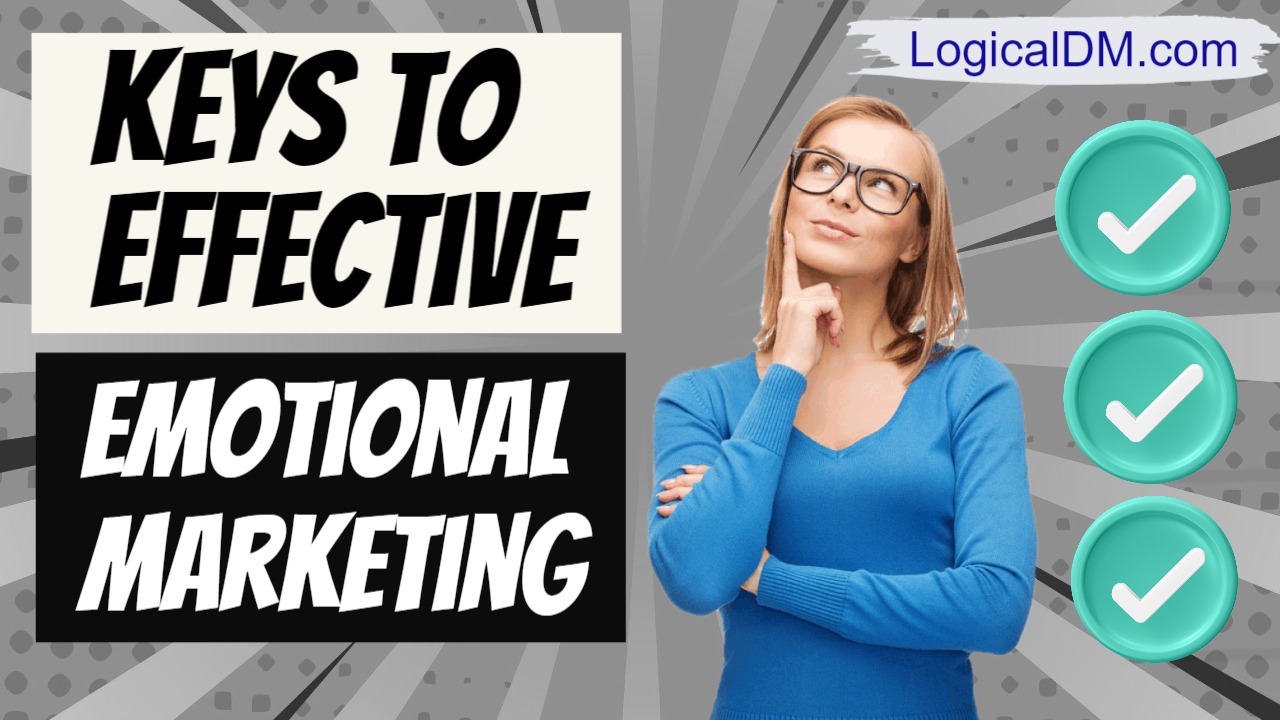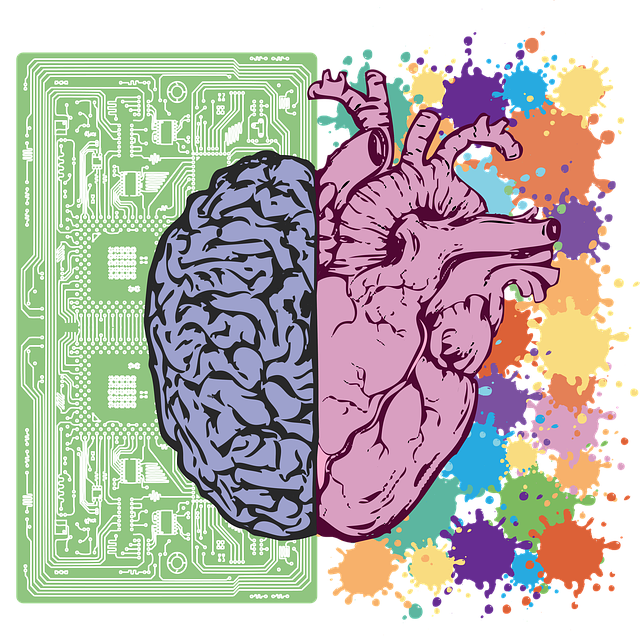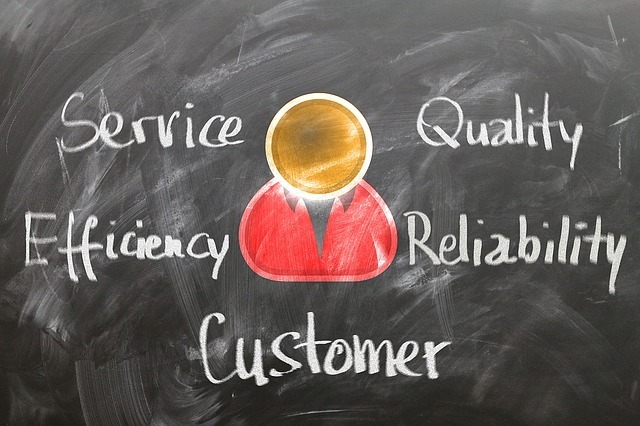
This is a custom HTML / JavaScript Element
In order To See Your Custom HTML/JavaScript Code in Action You Must Click On The Preview Page Button, Your Code is NOT going to be active in the edit mode
Emotional marketing is one of the most efficient methods for cultivating brand loyalty and connecting with customers. It helps you craft content that resonates with viewers, increasing its likelihood to be shared online by others. Customers who feel connected to a brand will keep coming back for more and recommend it to friends and family, which in turn helps the business expand.
To further explore this topic we first need to step back and take a look at basic human needs. Maslow's Hierarchy of Needs is a psychological theory developed by Abraham Maslow in 1943. It outlines five levels of basic human needs that must be met in order for an individual to reach their full potential. The five levels are physiological, safety, love/belonging, esteem, and self-actualization.
The first level, physiological needs, includes the basic necessities for survival such as food, water, and shelter. The second level is safety which includes physical and emotional security. Love/belonging is the third level and involves feeling connected to others through family or friends. The fourth level is esteem which encompasses self-respect and respect from others. Lastly, the fifth level is self-actualization which is when an individual reaches their full potential by fulfilling their personal goals and aspirations. Maslow's Hierarchy of Needs provides a framework for understanding how humans strive to meet their basic needs in order to reach their highest potential.

Maslow's Hierarchy of Needs is a useful tool for understanding how to best target customers with emotional marketing. By understanding which level of the hierarchy a customer is at, marketers can craft messages that resonate with them on an emotional level. For example, if a customer is at the physiological level, they may be more responsive to messages that focus on basic needs such as food or shelter. On the other hand, someone at the self-actualization level may be more likely to respond to messages about personal growth and achievement. By understanding which stage of the hierarchy your customer is in, you can craft emotionally resonant messages that are tailored to their specific needs and desires. Make sense?
Identify Your Customer’s Emotions
Emotions are the driving forces behind customer behavior. They influence spending decisions, product recommendations and word-of-mouth referrals alike. According to Qualtrics customer experience expert Bruce Temkin, customers have emotions on a spectrum from adoration to ambivalence.
Understanding the emotions of customer interactions through various communication channels is a crucial step towards cultivating an emotionally engaging experience for them. It can help you develop products and services that are tailored to what your customers want to feel at every point in their journey with the company. The positive effects that they feel is the right direction for them to experience and become repeat customers.

In a world where customer experience is the foundation of success, brands must understand and leverage emotion as part of their marketing strategies. This can be accomplished by recognizing and measuring customers' emotions and needs. Identification of your customer's emotions requires the use of a customer sentiment analysis tool. There are some solutions that enable you to analyze and listen to customer feedback in such a way that allows you to pinpoint what drives their feelings.
By doing this, you'll be able to establish a more human connection with your customers rather than simply pushing products at them. They'll feel that you genuinely care about them and are working to eliminate any unpleasant feelings they may be experiencing. This will help build trust between both of you and encourage them to purchase from you again in the future.
Identify Your Customer’s Needs
Understanding your customer's needs is one of the most crucial steps in turning them into loyal buyers. By understanding what drives your customers, you can craft product and service offerings to exceed their expectations at each step in the buying process.
To better understand your customer's requirements, conduct market research or solicit feedback from existing customers. Doing this will give you a deeper insight into their expectations and help create more efficient sales and marketing tactics.

You can also use surveys to gather this information. These can be done online, in person or via email or SMS. Focus groups can also be used to understand your customers’ needs. These groups typically consist of a small number of people who share a common interest or product. Needs can take many forms, such as price, functionality and experience. By understanding a customer's requirements, you can ensure your products and services are priced appropriately to cater to them, providing them with an improved purchasing experience.
Another way to understand customer needs is by considering them as jobs-to-be-done (JTBD). According to this theory, customers hire your product or service in order to complete a task that matters to them.Once you have a good grasp of your customer's needs, it’s time to start developing a plan for meeting those requirements.
Create a Marketing Strategy for Emotional Engagement
Emotional marketing is one of the most effective methods for connecting with customers. It has the potential to boost sales and foster loyalty.
Before you create an emotional marketing strategy, it is essential to understand what motivates your target audience. This will allow you to craft content that engages them deeply and encourages them to share it widely. Emotions can help your brand stand out from competitors and draw in new customers. Additionally, it makes the customer experience more personalized and lasting. It increases loyalty and boosts sales.

Emotional marketing has been shown to be highly effective for many purposes, including building brand loyalty and increasing ROI. A recent study found that emotionally engaged consumers spend twice as much on brands as non-emotionally engaged ones. Digital marketing is a great way to build brand awareness for small businesses. It’s an effective and affordable way to reach a large audience, and you can tailor your strategy to fit within your budget. Creating an emotionally engaging marketing campaign can help you increase customer loyalty and build long-term relationships with your customers.
For example, using social media platforms to get emotional responses in marketing efforts can be a great way to engage with your target audience and target customer. One of the most effective methods is to create content that resonates with your audience on an emotional level. This could involve creating stories, videos, or images that evoke strong emotions like joy, sadness, or excitement.

You can also use hashtags and other forms of engagement to encourage people to share their own stories and experiences related to your brand or product. This will help build a deeper connection with your audience and make them more likely to respond emotionally to your content. Finally, it’s important to remember that social media is a two-way street; be sure to listen and respond when people comment on your posts and take their feedback into account when creating future content.
To achieve these outcomes, you must comprehend the emotions that drive customers to purchase from you and how your offerings complement their lives. By understanding these drivers, you can tailor your emotional connection strategy towards specific consumer engagement and acquisition, retention or cross-selling objectives.
Create a Marketing Strategy for Emotional Engagement
Emotional marketing is an effective way to engage your audience on a deeper level. This type of connection can create brand loyalty, boost sales, and enhance customer satisfaction. A successful emotional marketing strategy should incorporate various tactics. For instance, storytelling can be used to evoke feelings and increase relatability. You could also incorporate customer testimonials into your advertising or incorporate your company's backstory onto the website.
Another strategy is to build a community around your brand. Doing this can foster feelings of camaraderie, acceptance, and enthusiasm that foster loyalty towards it. Many brands rely on emotional marketing to encourage positive word-of-mouth advertising and online reviews. This is especially true for social media posts that make people smile. Furthermore, consumers who have had good experiences with a product or service are more likely to share that information with their friends and family members.

As an example, creating a customer engagement strategy on social networks is an effective way to build a personal connection with a customer. The key is to create content that resonates with your target audience and encourages them to interact with your brand. Start by understanding the interests of your target audience and then create content that speaks directly to those interests. For example, if you are targeting mothers, post content about parenting tips or family-friendly activities. You can also use polls and surveys to get feedback from customers and learn more about their needs and preferences. Another great way to build relationships on social media is by responding quickly and thoughtfully to user-generated content like customer comments or messages. Showing customers that you value their opinion will help them feel connected to your brand, which can encourage loyalty in the long run.
How Emotions Influence Purchasing Decisions
Emotions play an integral role in most of our decisions. According to Antonio Damasio, Professor of Neuroscience at the University of Southern California, those with brain damage that has left their "thinking" areas unaffected but affected their emotions when presented with alternatives were more likely to choose one of the affected options. Emotions can be so powerful that they often override logic when making decisions. By understanding how and when consumers use their emotions, brands can craft more impactful experiences for them.

Likeability
Likeability is one of the strongest emotions that influence purchasing decisions, so brands should strive to cultivate a likable brand image.
Branding can help a company stand out from competitors, foster customer loyalty and expand its market share. Crafting an affable brand image is essential for companies looking to foster genuine connections with their customers.
Affordability
When making purchasing decisions, affordability of a product or service should always be taken into account. For instance, when making large purchases like a new car or home, knowing if you can afford the cost may be key in making your decision. According to the federal government, housing is considered affordable when it costs no more than 30% of a household's income. This standard can be reached through various affordable housing programs and assistance.
Value
Value is the total of all benefits a product or service provides its customer. This could include monetary, functional, social or emotional advantages. Customers typically weigh the perceived value of a product against its price. Gaining insight into this equation can help your business better determine how to enhance offerings and spur growth. Value is subjective, and companies can always strive to add more and better value. Although value is subjective, universal building blocks of worth exist which provide companies with opportunities to enhance their current operations or expand into new markets.
Prestige
The prestige of a product or service can influence purchasing decisions. It's often determined by consumer trends as well as a company's reputation for quality and dependability. Prestige products may include luxury services, exclusive memberships, high-end fashion and accessories, as well as professional services like consulting or legal counsel. All of these items are usually seen as symbols of one's social standing.
Convenience
Convenience is the ability to use a product or service without needing to invest time and energy into it. This could include physical items like an ATM or telephone, as well as online services like PayPal which allow you to complete purchases or check your account balance quickly and easily. Consumers' lifestyles are becoming busier with each passing year, thus placing an emphasis on convenience. Quality (32%) and price (30%) remain the top influencing factors for most shoppers.

Comfort
Comfort can have a significant impact on purchasing decisions. When people experience stress or anxiety, they often turn to food items that provide them with comfort. Some examples of comfort foods that offer this feeling include ice cream, cookies and pizza. But there are also nutrient-dense alternatives like salmon, nuts or other healthy foods that can provide the same sensation of comfort.
Safety
Safe products and services tend to be more appealing to consumers due to their lower risks of injury. Furthermore, they have a higher perceived value and greater consumer trust. Product safety should be one of your business' top priorities, as unsafe products can cause physical injuries, financial damages and even death. That is why product safety must be one of your business' highest priorities.
Reliability
Reliability is the ability of a product or service to be replicated repeatedly. It's essential, as it guarantees that when you purchase something specific, it will function correctly every single time. Assessing a product or service's reliability requires conducting multiple tests. One popular approach is conducting a test-retest, where items are divided into two different halves and their results compared.
Emotional Attachment
Emotions play a crucial role in human decision-making. They motivate us to take action and can even lead us down an impulse purchase path. Emotional attachment (EA) is the strength of its consumers' connection to it. Emotionally attached customers tend to be loyal and willing to pay more for products or services offered by that brand. When measuring the emotional attachment of a brand, an EA scale can be utilized. This scale measures affection, passion and connection.

What Is Meaningful Customer Engagement and How to Gauge Results
If you want to attract new customers and keep them coming back for more, customer engagement is the key. Meaningful engagement involves meeting your customers where they are at and engaging them on their terms. The key is creating an enjoyable experience that makes them feel connected to your brand and content with their decision to do business with you.
Customer Satisfaction
Measuring customer satisfaction is an essential step in successful customer engagement. Without it, businesses risk losing customers and revenue generation suffers as a result. Top-performing companies monitor several key performance indicators to increase customer satisfaction and retain loyal customers. Doing this allows them to focus on areas which have the greatest effect on overall business growth.
Companies can use repeat purchasing plans from customers as a gauge for satisfaction and loyalty. To accurately gauge results, implement a survey tool that allows your employees to gather feedback from customers at various stages of their journey. For instance, you can use guest messaging platforms to send quick surveys asking about wait time while customers wait in line or their interaction with staff members before moving onto the next service desk.
Customer Loyalty
Customer loyalty is the likelihood that a customer will continue buying from you in the future, driven by customer satisfaction and often outweighing other factors such as pricing or availability. Loyal customers are more likely to refer your business to their friends and colleagues. This practice of brand advocacy is essential for long-term success and should not be underestimated.

At five times the expense of recruiting new customers, cultivating existing ones is a smart strategy to reduce attrition.
To measure customer loyalty, you can look at various metrics used by the Fortune 1000 to monitor brand experience. For instance, Net Promoter Score (NPS) is a common indicator that indicates how likely customers are to recommend your brand.
Another useful metric is repeat purchase rate, which measures how many customers make repeat purchases after their initial purchase. This metric offers valuable insight into customer retention rates and helps identify which customers are more receptive to new products or services.
Customer Retention
Retention is a critical indicator of customer engagement that measures how many users return to your product or service over time. High retention rates contribute to long-term success by cutting costs and creating an ongoing revenue stream for your business. Retaining customers is up to five times less expensive than acquiring new ones, and they are more likely to recommend your brand to friends or family. Monitoring your retention rate regularly and implementing retention strategies are essential for success. One key metric that can help determine customer loyalty is monthly active users (MAU). This metric tells you what percentage of unique visitors visit your website each month.
It also allows you to gauge how useful or authoritative your content is for your target audience. For instance, if your MAU rate is low, this could be an indication that you need to update or enhance it. You can then use this data to assess customer engagement strategies and guarantee users have an enjoyable experience.

Customer Engagement
Customer engagement is the collective term for all interactions a customer has with a business during their purchase journey, from product research to post-sales support. It encompasses all aspects of a customer's experience from start to finish. To deliver meaningful customer engagement, you must understand what customers desire and need. Doing this can help you foster loyalty among your audience while decreasing churn rates.
One of the best ways to measure customer engagement is through visit frequency. This can tell you how many users are visiting your website and whether they return regularly. Another key metric to monitor is pages per session. This can indicate where in the customer journey they are getting less value from your offering, potentially leading to dissatisfaction.
Keys to Effective Emotional Marketing
Emotional marketing taps into consumers' emotions and motivates them to act. It can be an effective tool for building brand loyalty and increasing sales, but it can be challenging to execute properly. Emotional marketing requires authenticity and sincerity to be successful. To accomplish this, marketers must gain a profound understanding of their audience on an intimate level.

Know Your Audience
To truly reach your audience's hearts, it is essential that you comprehend who they are and their motivations. Knowing this information will enable you to craft emotionally engaging marketing messages that speak directly to them, motivating them to become brand loyalists and advocates. Constructing buyer personas is a reliable method for getting to know your audience and putting yourself in their shoes. It allows you to segment your target market into specific demographics and psychographics, giving you insight into their pain points, motivations, and preferences.
Emotional marketing is the practice of using words and images that elicit either positive or negative feelings. This technique can be employed across many areas of marketing, from social media posts to product descriptions and ads. First impressions are formed quickly, and people tend to respond favorably to advertisements that provide instant gratification. That is why including words like "now," "today," or "within 24 hours" into your emotional marketing messages can be so influential.

Another way to establish emotional connections with your audience is through an engaging narrative. Craft a captivating tale that resonates with readers and emphasizes the benefits of your product or service. Using evocative imagery and videos in your marketing materials is an effective way to stir strong emotions within your audience. These images and videos may elicit feelings of joy, nostalgia or even fear; helping them feel personally connected to your brand.
In today's business world, connecting with your audience on an emotional level is vital for creating a strong connection. Doing so will result in loyal customers and advocates who will purchase from you again in the future, as well as recommending your products or services to their friends and family.
Know Your Products
When making a sales pitch or providing customer support, customers need to know that you understand your products. This includes understanding how they add value, what sets them apart from competitors and the specific details of your offering. Understanding your products and how they function allows you to present them in a way that appeals to the emotional side of the buyer's decision-making process. Doing this can make your product stand out in an overcrowded marketplace and increase conversion rates.

For instance, a brand offering anti-aging skin cream could leverage women's feelings of vanity and pride to promote their product. This could be used as an incentive for them to try it out and purchase it. Emotional marketing can also be employed to raise public awareness about social issues. This could include inciting fear about climate change, advocating for gender equality or poverty reduction.
Effective emotional marketing begins by understanding your audience's feelings, then crafting a story around those emotions. This can be done through using emotional cues to tell stories or creating content that appeals both to entertainment needs and wants of your target market. When you can appeal to your customer's emotions and demonstrate how your products can make their lives better, it helps build a stronger bond between your company and customers. This can result in loyal customers and an enthusiastic following for your brand.
Crafting an emotional marketing strategy necessitates thorough planning and research into your audience's needs and desires. This information can be utilized to tailor all of your advertising and promotion tactics, such as websites, emails and social media channels.
Know Your Competition
When marketing a product or service, it is essential to be aware of your competitors. Understanding who they are can help you craft an emotional marketing strategy that resonates with customers and attracts new ones.
In a world where businesses are constantly competing for consumers' attention, it's essential to stand out from the competition. Emotional content has been known to perform nearly twice as well as fact-based material; plus, it can boost brand loyalty, cultivate advocates and boost sales.

Effective emotional content should tap into potential customers' fears, desires, dreams or memories. Doing this will motivate them to take action and become loyal brand fans. For instance, if you're selling a software program, an emotional ad that shares stories about its practical application can entice potential customers to purchase your item. You can use emotions to promote a particular theme, such as social justice or sustainability. Airbnb's "Let's Keep Traveling Forward" advertisement was an inspiring example of this after the US travel ban in 2018.
Another inspiring example is Always' 2014 #LikeAGirl campaign, which transformed an offensive phrase into a rallying cry of confidence that brought big profits and increased visibility for the hair products company.
Establishing an emotional connection with your audience can make them feel like they're speaking to an old friend. Fostering this kind of relationship will encourage them to recommend your brand to their friends and colleagues. Emotional marketing campaigns can be employed to promote any product or service, but it's particularly successful when targeting audiences that are emotionally connected like clothing and cosmetics.

Emotional marketing allows you to reach people who may not otherwise consider your brand when searching for a new job or home. Successful emotional marketing relies on creating an emotionally charged landscape, from your website design and graphics to ads. To do this, create mood boards - collages of images and colors that help visualize how the campaign will appear and feel.
The human brain is incredibly powerful, and it's capable of applying positive experiences and emotions from blog posts to brands in a variety of ways. For example, if a person reads a blog post about a brand they like, their brain will store the positive emotions associated with that brand, such as satisfaction or admiration. This can lead to increased loyalty towards the brand and an overall more positive view of it.
Likewise, if someone reads a blog post that shares a positive experience with a certain brand, their brain may associate that experience with the brand itself. This could lead to increased trust in the brand and even encourage them to try out its products or services. Reading positive experiences and emotions from blog posts can also help create an emotional connection between the reader and the brand. This connection can be extremely valuable for brands looking to build relationships with their customers and increase customer loyalty over time.

Know Yourself
Emotional marketing is an effective tool to use when selling your products. It helps your audience connect with you more deeply, which could ultimately result in increased brand loyalty and sales in the long run. Studies show that people rely more on emotions when making decisions than facts. That's why brands that can elicit emotion - such as laughter or tears - from you will likely have a better chance at earning your business than ones solely focused on products.
Emotional marketing is the cornerstone of successful brand building and long-lasting customer relationships. However, for it to be truly effective, your emotion-based strategy must be strategic and in line with overall objectives. This means getting to know yourself more intimately. It may be a journey that is challenging and uncomfortable at times, but one you will never regret. Start your journey towards self-discovery through personality tests, writing a journal, or speaking to a therapist. There are multiple ways to begin this journey.
Another great way to get to know yourself better is by exploring your past. Every experience, big or small, has shaped who you are today. Learn from your mistakes and be grateful for everything that's come your way. With more self-acceptance and assurance in who you are, saying "yes" more often can become less of a stressor and allow you to say "no" with ease.
Knowing yourself better will enable you to identify areas for improvement and become even more successful in both your professional and personal life. No one expects you to know yourself perfectly, but you do need to be aware of the challenges you face and areas where unhealthy patterns may develop. Loving yourself despite all your faults, strengths, and weaknesses is the most crucial step you can take towards becoming a happier, healthier version of yourself.

 Add Row
Add Row  Add
Add 



